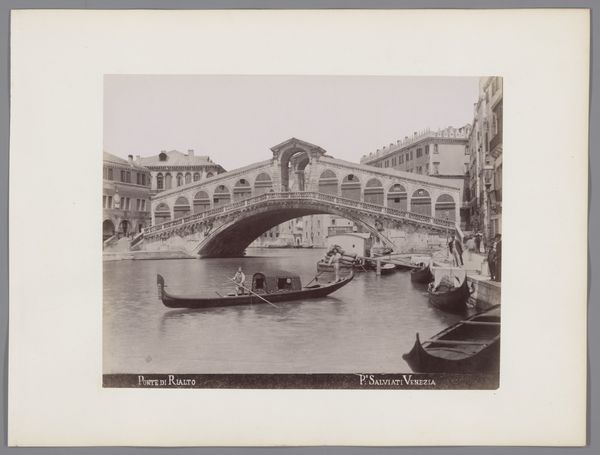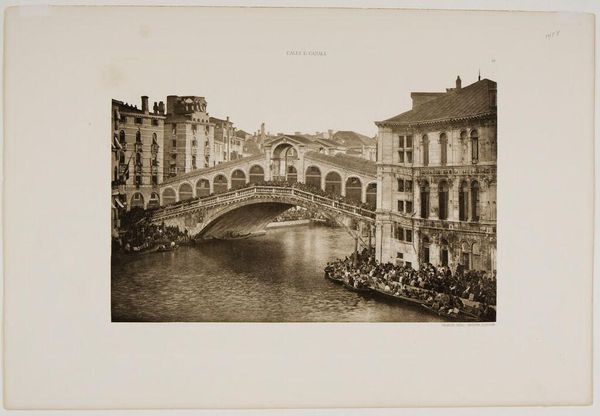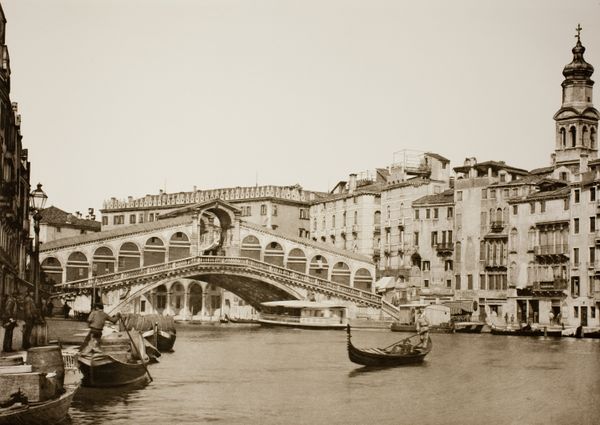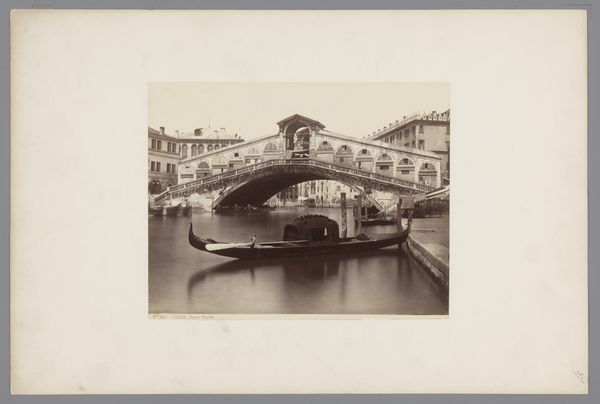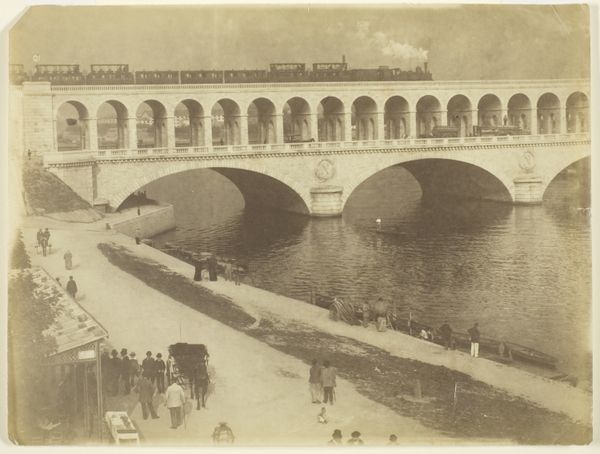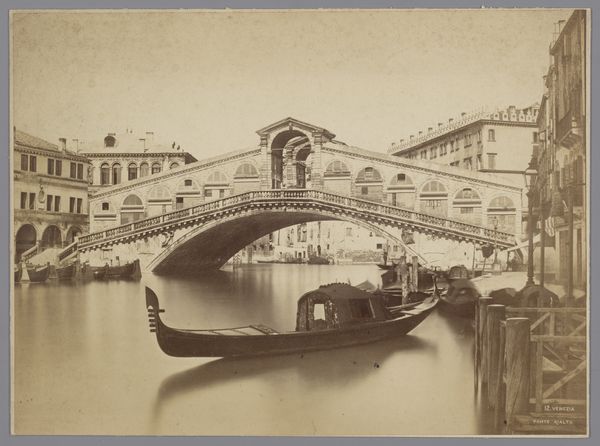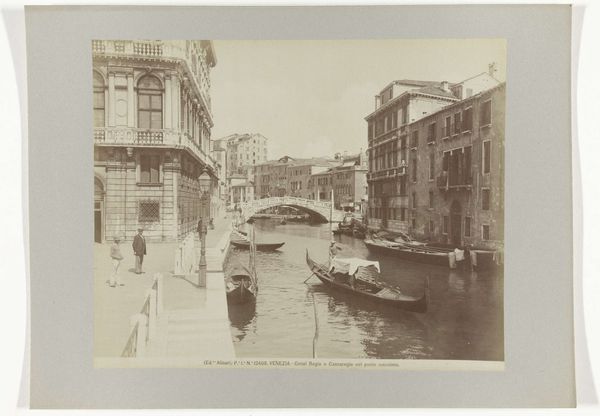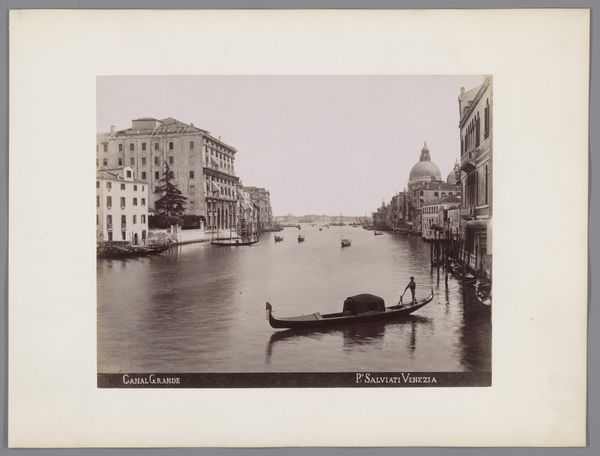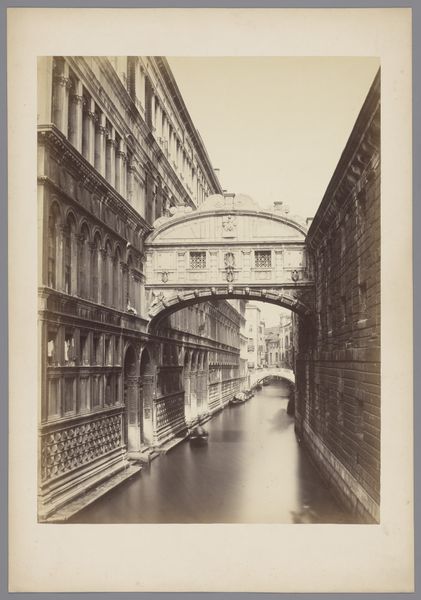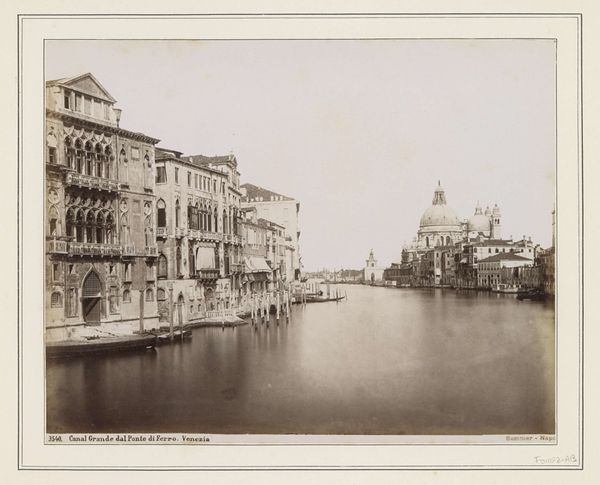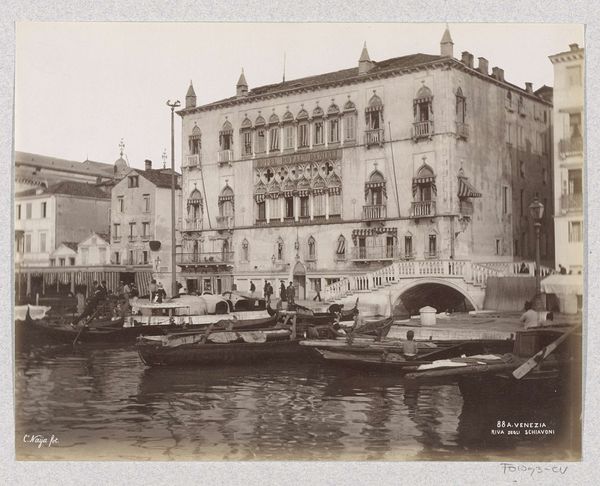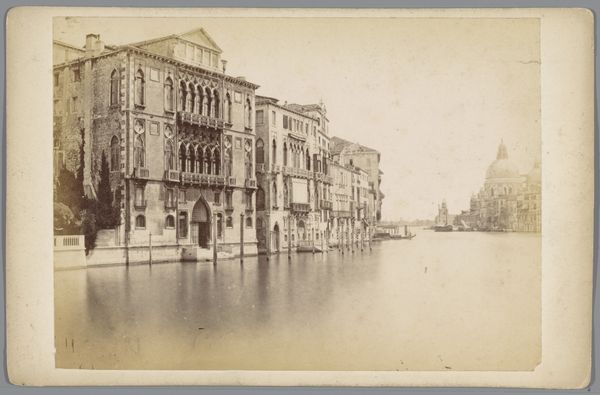
Gezicht op de Rialtobrug over het Canal Grande in Venetië 1885 - 1930
0:00
0:00
Dimensions: height 202 mm, width 250 mm
Copyright: Rijks Museum: Open Domain
Curator: Ah, here we have "Gezicht op de Rialtobrug over het Canal Grande in Venetië," a photograph dating roughly from 1885 to 1930, attributed to Anderson of Rome. It resides in the Rijksmuseum collection. Editor: What a striking image! The sepia tone lends a romantic, almost theatrical air to the scene. The Rialto Bridge dominates, a magnificent piece of architecture, and the gondolas glide along the canal, reinforcing the picturesque quality of Venetian life. Curator: Absolutely. What's fascinating is considering this photograph not merely as a record of a place, but as a produced object, conceived and distributed within a growing tourism industry. Think of the photographers setting up shop, the chemical processes, the printing, the sale of these images as souvenirs. Editor: Yes, the commodification of Venice as a tourist spectacle is certainly at play. This image freezes a moment in time but it also presents a curated view, catering to an expectation of Venetian beauty. The firm Anderson understood the power of imagery and participated in its marketing to tourists of the day. Curator: Exactly! This photography would be created with a vision of architecture and composition in mind. Furthermore, how did distribution methods change? Was this sold exclusively as prints, or perhaps incorporated into publications. These would impact our viewing experience now as they circulated widely through popular media Editor: The choice of the viewpoint and its framing would influence the viewer. Anderson seems intent on highlighting not only the architectural marvel of the bridge, but also its harmonious integration into the daily life of Venice. There’s also the interesting interplay of light and shadow that adds a layer of depth. Curator: Indeed, it is difficult not to see how photographs and printing allowed more and more production. Were those photographic techniques and mass productions sustainable? What environmental impacts existed. It’s about considering how materiality also creates lasting, if unseen impacts, on our world. Editor: It makes you consider the implications for today’s constant digital imagery that may prove overwhelming to our senses. Overall, this historical photograph helps us understand how Venice was both experienced and consumed by visitors. Curator: Indeed. Thinking about this in terms of photography—production, consumption and societal trends of its day - opens it to questions we never thought about, beyond merely the pretty pictures of cityscapes Editor: I agree. A valuable reflection on the intersection of image-making and historical tourism.
Comments
No comments
Be the first to comment and join the conversation on the ultimate creative platform.
